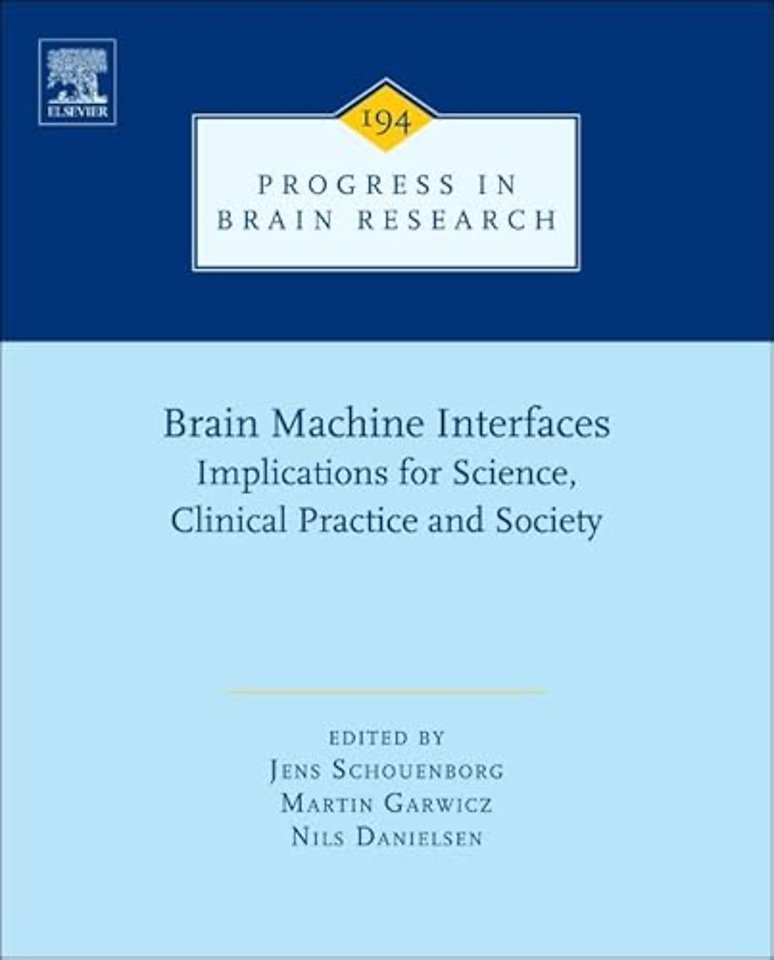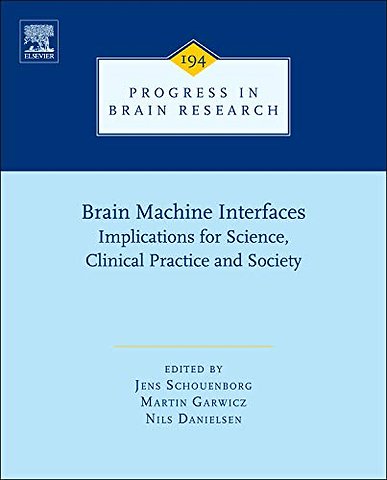<p>1. Making the lifetime connection between brain and machine for restoring and enhancing function, Philip R. Kennedy<br>2. The Human Neural Interface: Restoring Function by Merging Brain and Technology, John P. Donoghue<br>3. Brain-Computer Interfaces for communication in locked-in patients, Andrea Kübler<br>4. Towards a Whole Body Neuroprosthetic, Miguel A.L. Nicolelis<br>5. Useful Signals from Motor Cortex, Andrew B. Schwartz<br>6. Applications of implantable recurrent brain-computer interfaces, Eberhard E. Fetz<br>7. Toward ultra thin multichannel electrodes for studies of learning and memory in vivo, Jens Schouenborg <br>8. The Logics of Networks in Motion - mechanisms for selection and control, Sten Grillner <br>9. Deep Brain Stimulation: Brain Machine Interfaces at large, where are we going to? Alim-Louis Benabid<br>10. Development of neuromodulation treatments in a large animal model - Do neurosurgeons dream of electric pigs?Jens C.H. Sørensen<br>11. Basal ganglia dynamics during action initiation and suppression, Joshua D. Berke |<br>12. A few examples of the contribution of animal research for clinical application of Deep Brain Stimulation, Christelle Baunez <br>13. Deep Brain Stimulation- challenges and opportunities, Andres M. Lozano <br>14. Cochlear and retinal prostheses: an overview of safety and efficacy, neural rescue and brain plasticity studies, Rob Shepherd <br>15. Cochlear implants: Matching the prosthesis to the brain and facilitating desired plastic changes in brain function, Blake Wilson <br>16. Neural microstimulation parameters and interfacial quality effects, Kevin Otto<br>17. The Feasibility of a Cortically Based Visual Prosthesis: Stimulation and Recording in Monkey Visual Cortex with Chronically Implanted Microelectrode Arrays, Dick Normann<br>18. Physical and chemical factors influencing the biocompatibility of an implant, Lars Magnus Bjursten <br>19. A Biologically-based Design Strategy for Reducing the Foreign Body Response to Chronically Implanted Neural Interfaces, Patrick Tresco<br>20. Biocompatibility and CNS: need for standardization? Cecilia Eriksson Linsmeier <br>21. Reviving the CPG after spinal cord injury, Serge Rossignol <br>22. What does the brain control? Gerald E. Loeb <br>23. Advanced use of electrical stimulation for recovery of function, Dejan B. Popovic <br>24. Restoring Standing and Walking by the Reactivation of Central Neural Networks, Vivian Mushahwar <br>25. Reanimating the arm and hand with intraspinal stimulation, Andrew Jackson <br>26. Ethics of Control and Consent in Brain Stimulation for Parkinson Disease, Paul J. Ford <br>27. Neuroprosthetics and Neuromarkers, Apostolos P. Georgopoulos <br>28. Neural Signal Processing: At the Interface Between Basic and Clinical Neuroscience, Partha P. Mitra <br>29. Inference of hand movements from population activity in monkey and human sensorimotor cortex: Towards Brain-Machine Interfaces, Ad Aertsen <br>30. Semiconductor Chips with Ion Channels, Nerve Cells and Brain Tissue, Peter Fromherz <br>31. Interfacing Neurons with Carbon Nanotubes: (re)engineering single-neuron excitability and network connectivity in Cultured Brain Circuits <br>32. Nanomodified surfaces and neurite outgrowth, Martin Kanje <br>33. Nanochannels for cell biology and DNA analysis, Jonas Tegenfeldt <br>34. Establishing Reliable Communication Across the Glial Scar: In-Situ Polymerization of Conjugated Polymers in Living Cortex, David C. Martin </p>

